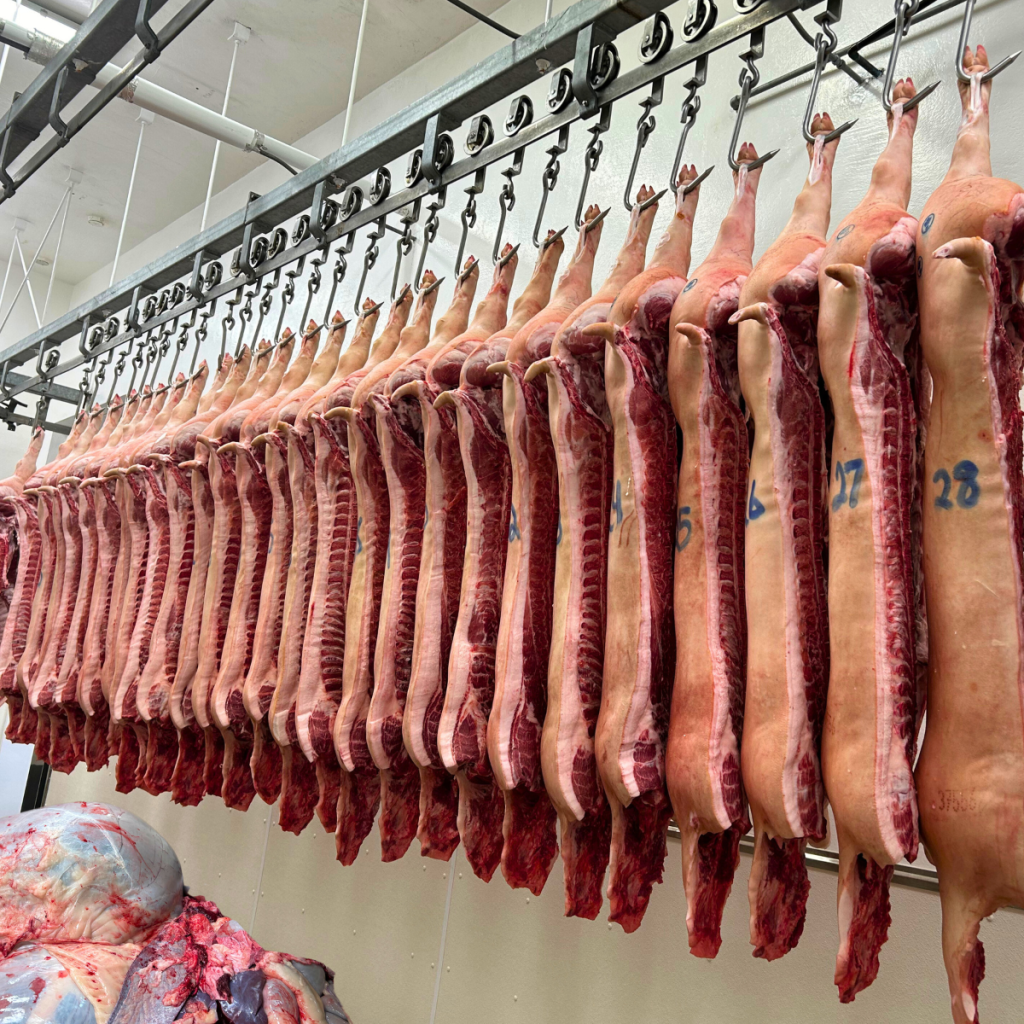Submission 2025
| Submitted by: | Ifedayo Bello |
| Department: | Agricultural, Food + Nutritional Science |
| Faculty: | Agricultural, Life + Sciences |
Let me guess! Picking up this image, you are focusing on the carcass and not the bottom left, with the meat by-products. You’re not alone, same as the industry! This image was created to portray that reflection and call our attention to see beyond the carcass.
Canada’s meat industry processes ~3.7M metric tons of meat yearly, generating millions of tons of by-products, like edible offal, etc, going to waste. Despite their high nutritional value, they’re often discarded due to consumer perception and cultural preferences, especially in Canada/North America, with limited consumption.
What if we could redefine their role in our food system?
While others focus on the meat carcass as the bigger picture, just as you are currently focusing on them in this image, my research sees beyond the carcass and reimagines these meat by-products as resources.
By using extraction techniques, underused edible meat by-products can be repurposed into nutritious and sustainable ingredients to reduce waste and create new food innovations.
This image portrays shifting the industry focus beyond the carcass, by repurposing every part of an animal, which is today’s waste, into tomorrow’s food system.
Was your image created using Generative AI?
No.
How was your image created?
Thought Process:
While the focus of the meat butchers was on the dressed carcasses in the slaughter room, my attention was on the mounted meat by-products in the gut rooms, thinking about creating a comparative image to make people see just beyond the carcass.
Process:
This image was created by taking a photograph of dressed meat carcasses in our slaughter room, and the pile of meat by-products in the gut room
Technique:
The two images were brought together to portray the targeted narrative of seeing beyond the carcass at a glance. The by-products were strategically placed at the bottom left corner beneath the dressed carcasses to depict them as the outflow of the by-product that’s often overlooked but demands attention, hence, the title: “Beyond the Carcass”.
Where is the image located?
Meat Research Lab, Lacombe Research and Development center, Lacombe, Alberta.

